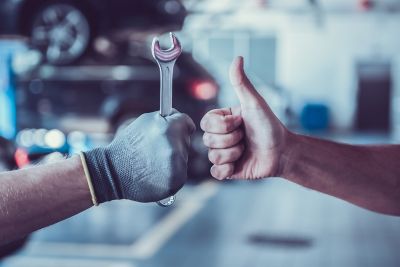The Comprehensive Guide to Air Treatment Systems
Imagine a world where the air you breathe is filled with impurities like water, oil, rust, and pipe scale. It would be unhealthy and could damage any machines or systems that depend on that air.
This is why air treatment systems are so crucial. They make sure the air used in different applications is clean and free from contaminants. This protects equipment, improves efficiency, and ensures product quality.
In this guide, we will explore the importance of treating compressed air. We will discuss the main components involved. We will also cover how to choose and maintain the right equipment for your needs.
The Importance of Compressed Air Treatment
Compressed air treatment is essential for several reasons:
- Preventing Equipment Damage: Impurities like water, oil, rust, and pipe scale can damage air compressors and other equipment. Keeping these impurities away is important to protect the equipment. By treating compressed air, you can prevent corrosion, wear, and tear, thereby extending the lifespan of machinery.
- Improving System Efficiency: Clean air is essential for the smooth and efficient operation of systems. Contaminants can obstruct filters and other components, leading to decreased efficiency and increased energy consumption.
- Maintaining product quality is important. In industries such as food production, healthcare, and precision manufacturing, the quality of compressed air plays a key role. It affects the overall quality of the products. Contaminated air can result in defects and non-compliance with industry standards.
- Compliance with Regulations: Many industries have stringent regulations regarding air quality. An effective air treatment system helps ensure compliance, thereby reducing the risk of fines or legal issues.
Key Components of an Air Treatment System
An effective air treatment system has several parts. Each part is important for providing clean and dry compressed air.
Air Compressor Dryers
Air compressor dryers remove moisture from compressed air, preventing corrosion and equipment breakdown. There are three main types of air dryers:
- Refrigeration Dryers: These dryers use a refrigerant to cool the air, causing moisture to condense and be removed. They are suitable for general-purpose applications.
- Desiccant Dryers: These dryers use a desiccant material to absorb moisture from the air. They are ideal for applications requiring extremely dry air.
- Adsorption Dryers: These dryers use a special material that captures and removes water vapor from the air. They are perfect for situations that require very dry air.
Filters
Filters remove contaminants like dust, dirt, and oil aerosols from the air stream.
Oil/Water Separators
Oil/water separators remove oil and water from the compressed air. They are essential for preventing oil contamination, which can damage equipment and affect product quality.
Condensate Drains
Condensate drains remove moisture from the compressed air system. Cyclone condensate separators are a common type, using centrifugal force to separate water from the air.
How to Select the Right Air Treatment Equipment
- Application: Different applications have different air quality requirements. For example, food production requires extremely clean air, while general manufacturing may have less stringent requirements.
- Compressor Type: The type of compressor you use will influence the type of air treatment equipment you need. For example, oil-lubricated compressors require more extensive filtration to remove oil contaminants.
- System Size: The size of your compressed air system will determine the capacity of the air treatment equipment you need.
- Budget: While it's essential to invest in high-quality equipment, it's also important to consider your budget. Consulting with an expert can help you make the best decision.
The Importance of Regular Maintenance
Regular maintenance is crucial for ensuring the optimal functioning of an air treatment system. Here are some maintenance tips:
- Schedule Regular Inspections: Regular inspections can help identify and address issues before they become significant problems.
- Replace filters regularly to ensure they continue to remove contaminants effectively.
- Check Drains: Ensure that condensate drains are functioning correctly to prevent water buildup.
- Monitor Performance: Regularly monitor the performance of your air treatment system to ensure it is operating efficiently.
Benefits of Investing in a High-Quality Air Treatment System
Investing in a high-quality air treatment system offers several benefits:
- Protects Equipment: A good air treatment system removes contaminants. This protects your equipment from damage. It also lowers maintenance costs and helps machinery last longer.
- Clean air is important for product quality. This is especially true in food production and healthcare industries.
- Following Regulations: A good air treatment system helps meet industry rules. This reduces the chance of fines or legal problems.
- Reduces Energy Consumption: Clean air ensures that systems run efficiently, reducing energy consumption and operational costs.
Common Questions
Here are some common questions about air treatment systems and their answers:
Air treatment is vital for protecting equipment, maintaining product quality, improving efficiency, and adhering to regulations.
We recommend to replace the filters every 3 to 6 months, depending on the usage and environment. Regular inspections help determine when your air system requires a replacement.
Some air treatment systems can be flexible, but it’s important to customise the system for specific needs. Different applications have varying air quality requirements, so consulting an expert can help you choose the right system.
Common signs are poor air quality, higher energy use, strange noises, and water or oil contamination. Scheduled inspections can help identify issues before they escalate.
Invest Now in Compressed Air Treatment System
Air treatment system is essential for maintaining the efficiency and longevity of air compressors and the systems they support.
Investing in a good air treatment system protects equipment. It also ensures product quality and meets regulations, plus, it helps reduce energy use.















